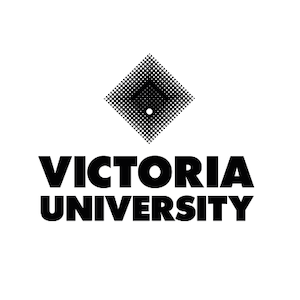Here’s How Victoria University Is Changing The Way We Study For The Better
The Block Model is improving the way students study – as well as their results.


The New Way To Do Uni.
In our fast-paced, complex world, not a lot stays the same for long. So it’s strange that universities are still pretty much the same as they always have been – especially in how they structure their degrees.
Some, however, have been breaking the mould. Victoria University has been overhauling tertiary education in Australia with its innovative Block Model structure since 2018.
For anyone who wants more manageable workloads and a more personal approach to university life, VU’s Block Model offers real education with a difference.
New Millennium, New Model
“Instead of students studying four units together in their first year – four different subjects, four exams, four different academics – what they should be doing is one unit at a time,” explains Trish McCluskey, Victoria University’s Interim Pro Vice Chancellor, Learning and Teaching.
That’s the Block Model in a nutshell: students do four weeks of a given unit. They sit with a small class (online at the moment, but also normally offered on campus), and focus on that one subject. Three mornings or afternoons a week, for three 3-hour sessions, they work on that one subject with one academic. Each unit thus forms a ‘block’, with students completing blocks sequentially rather than at the same time.
VU first adopted the Block Model as a way to encourage students to stay in uni beyond their first year – a major issue facing universities these days.
Their quest began with a TEDx talk by educationalist David Helfand, a pioneer of modern academia who talks about the need for a “university for the new millennium”.
Through Helfand’s talk, McCluskey and VU found the Block Model: an alternative structure that was helping institutions in America retain students, while changing the whole design of learning.
Multi-tasking? That’s so last century.

Image: Estée Janssens / Unsplash
Making Uni Manageable
As most of us who’ve been to uni can attest, your first year can be a bit of a minefield – and not just because of the beefy workload. It’s the huge lecture halls, the cast of various academics, and the lack of any sense of connection when you’re amongst a sea of strangers.
By making uni more manageable – essentially bringing it back to one unit at a time – students get to focus on the material, make friends, get to know people, and feel like they’re actually a part of something.
The Block Model seemed to strike a chord at VU, and fast. It was initially designed just for first year students, but it got an exceptionally positive response.
“The students loved it,” says McCluskey. “They insisted that we continue with it [through to second and third year]. The results are fantastic, and our retention rate is excellent.”
With zero lectures, seminar classes full of content that’s active and inquiry-based, and a focus on tasks that are actually relevant for students’ careers rather than a weighty emphasis on academic essay writing, it’s not difficult to see the appeal.

Image: Arnel Hasanovic / Unsplash
Direct Feedback And Scale
The Block Model is still gaining a foothold, but it’s quickly becoming a popular alternative to the traditional university experience. A number of institutions in North America, Sweden, and the UK have successfully adopted it. VU is the only Australian university using it, and has managed to roll it out on a much larger scale than other institutions.
“It’s been a bit of a ride,” says McCluskey. “Every system in the uni including enrolment, timetabling, and reporting had to change and adapt to the new model. It was a big undertaking.”
A key part of the shake-up was involving students in every step of the course design and development. VU wanted to give them a chance to contribute their views and experience and, according to McCluskey, students were the best critics. “They’ll tell you; [they’re] really honest in what works and what doesn’t.”

Image: Brooke Cagle / Unsplash
Keeping The Flame Lit
Demand for the four-week Block Model continues to grow, with more students taking advantage of being able to start study at a time that suits their life and schedule.
Unlike the traditional uni model, where students can only start twice a year at the beginning of a semester, the Block Model lets students start at a number of times during the year.
The Block Model’s excellent retention rate is another big draw for students who value a university that’s dedicated to improving access and success.
Whether or not it’ll catalyse more change in the field, one thing’s undeniable: when it comes to learning there’s little substitute for focus, time, and flexibility. Good education should be accessible and inclusive, a world away from ‘cram stress’, and maxed-out workloads.
Or, as McCluskey puts best: “it’s not about filling a pail, it’s about lighting a flame.”
—
Victoria University offers a new way to do uni. Find out more about VU’s Block Model and how it can improve your uni experience here.
—
(Lead image: You X Ventures / Unsplash)